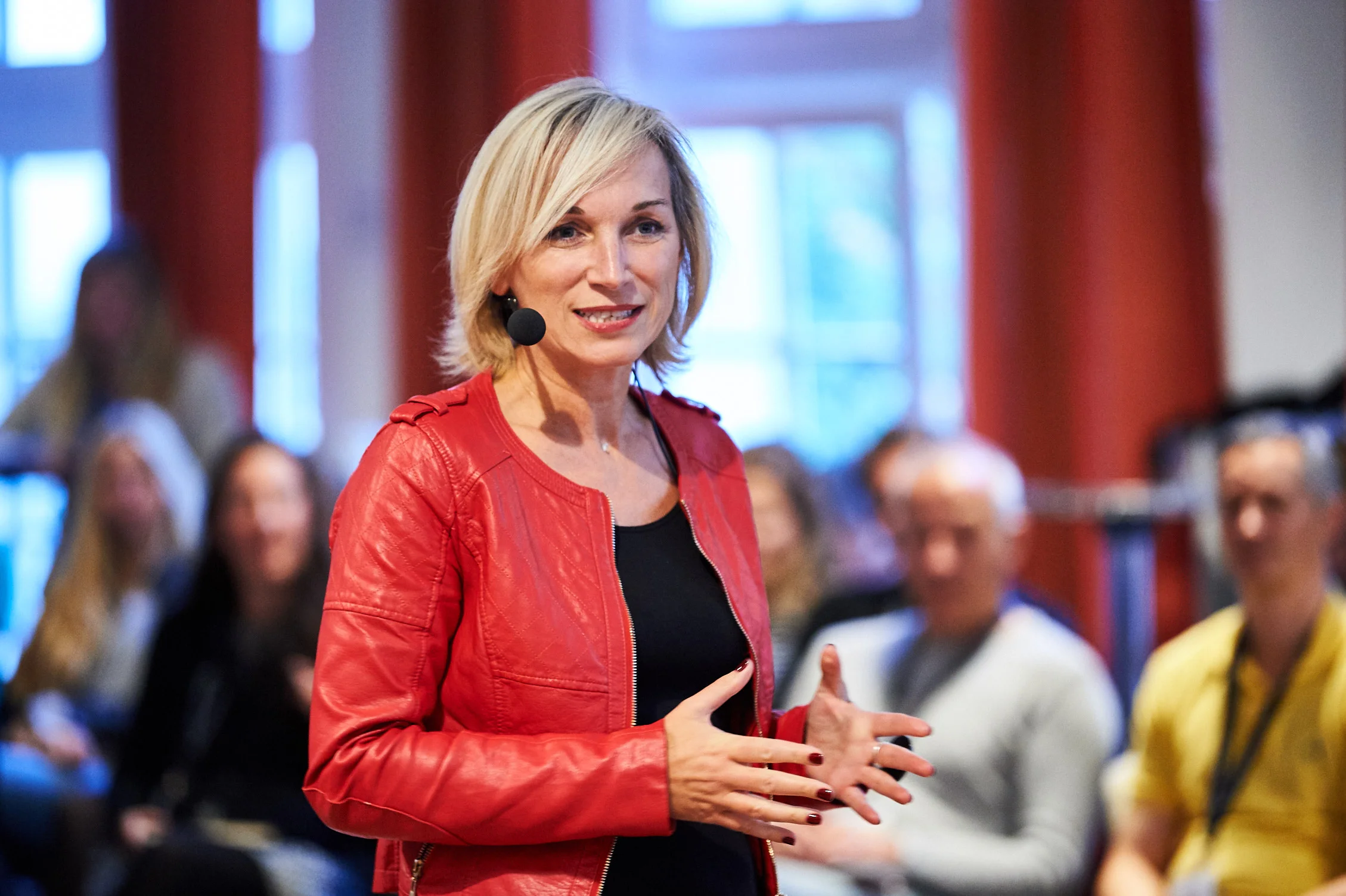Change Leadership: The Real HR Challenge
“You know what? I think you are too advanced for our company. Maybe you would be better off in another organization,” he said.
My heart sank.
He’d been our Head of Human Resources for several years already. It was the first time we met 1:1 to talk about my many thoughts and initiatives around people-powered, digital-enabled change. He had been desperately indifferent until that day, despite the increasing number of people involved in the internal change initiatives I’d kicked off, and the growing external recognition they triggered. I was hoping his interest and invitation to discuss would spark some collaborative effort to expand the change within the organization. Maybe we could talk with his team, go convince more functional managers, get creative together at scaling change… but no, he was just suggesting I leave and work for a more innovative organization.
So much for talent retention and change leadership!
With the Corona heath crisis hitting hard, and companies forced to dramatically evolve the way they work, I can’t help to wonder: how much better prepared would this organization be today, if they had leveraged then the human capital of innovation that they had, instead of stifling it? How many more opportunities are they wasting today?
This, and many other episodes when HR acted deaf or seemed threatened by change initiatives, made me think deeply about sources of the problem. Talk about HR to most of my change leadership consultant friends, and the reaction is eye roll + “forget them”. But I don’t want to forget HR. They are (or could be) important actors of change.
Among my 30-year work experience in various corporate environments, I have been an HR Director myself for a couple of years. One of my beloved sisters is an HR executive. I have vivid memories of fantastic HR leaders who have been role models, great business partners, mentors or even friends. Unfortunately, I have also come across countless mediocre or even toxic HR folks (may this post be helpful to you, ladies and gentlemen). They may not even realize how much damage they cause to people and organizations. But individual failures don’t really matter here, I want to look at the problem from a systemic perspective.
And yes, I understand change is difficult for all, including the HR function. But there is a specific challenge with HR related to change and transformation, which I have come to perceive more and more clearly across my 10 years of work in people engagement and collective change leadership. The issue, my friends, is that despite all the good intentions of its people, and despite counting in its ranks some of the amazing professionals I mentioned previously – the HR Dept. too often acts as a barrier to culture change by reinforcing obsolete cultures rather than evolving them.
Because they can’t, and also because they don’t want to.
They hold onto certain beliefs that have served well in the past, shaped by decades of engineering thinking, but have become counterproductive and detrimental to change. Here are, in my views, 10 steps HR could take to really be at the forefront of change & improvement.
Focus on groups rather than individuals.
Agile collectives, networks, communities create today as much value, if not more, than “high potential” individuals and traditionally-structured groups (hierarchies, project teams, reporting lines). How do you take them into account, and provide HR enablement & support? Is your service shaped by your HR Information Systems architecture? If yes, what can you do to expand your awareness? (Hints: get involved in some communities yourself. Get active on your enterprise social network, and not just in the HR community group).
Focus on people opportunities rather than people problems.
Maybe because they are made to handle issues with people every day, some HR folks come to think that some people are the problem, untrustworthy and unmanageable. Not unlike some policing staff, whose worldview can be tainted by the violence they face more often than the average citizen. But if the focus is on “people problems”, you tend to miss the systemic issues from which they arose. Therefore, making it impossible to solve them. Keeping the big picture and sense of purpose top of mind creates more openness to people opportunities – which can be greatly enabled by HR and contribute to positive change.
Actively expand knowledge of what could be different.
The number of HR people I’ve met in Enterprise 2.0 events, Community Management conferences, Digital Innovation meetups over the years has been close to zero (close to one, I should say to be fair to the exceptional M.-P. Fleury) . It seems that most of them attend HR Conferences only (some of them don’t attend anything at all). Such a pity! If you are genuinely curious, equipped with knowledge, you are more open to new / different operating modes that come your way. You don’t dismiss newness as “impossible here” and are in a better position to help those who try.
Experiment more.
You can be on the conservative political spectrum, but just try not to be in how you work, because this isn’t helping. When HR actively uses new technology (not just HR tech, but connection technologies, cloud-based apps, ideation systems, social media etc.), it makes a difference. When HR understands that project management can be done better than in a traditional “think, design, deploy” way, it makes a difference. “But, wait, our profession is burdened by all sorts of constraints: confidentiality, unions, legal risks, etc.” I hear you. So is ultra-regulated Quality, where I have contributed to an amazing, global culture change movement. When HR is not afraid to change themselves, they’re in a better position to inspire and promote organization-wide change.
Focus on community members – and the frontline – rather than tops of pyramids.
The traditional organization is made of a multiple of nested, small to big pyramids, each led by entry-level to senior managers, whom HR cares for. This hierarchy-first system maintains a system of hundreds, thousands of little bottlenecks. When I once promoted to my HR counterpart the fact that the Quality movement enabled, for the first time ever in this company, the emergence of amazing shopfloor talents, he burst: “But, we’re not here to detect shopfloor talent!”. Regrettable myopia. I’m not even talking from a social justice perspective. I talk from a performance perspective. It is just detrimental to organizational learning, sensing, adaptation – which, as we know, makes all the difference in complex systems.
Build the courage muscle.
It is not easy to resist your internal customers, managers who often have too much to lose from culture change and therefore don’t push for it. We saw with the MeToo movement how little HR was trusted to investigate harassment cases (often dismissed as invented, although research shows that this is rarely the case), support the victims, and address the issue as a systemic problem. Was is a lack of courage? A perception that status quo was in managers & HR’s best mutual interest? Another hypothesis is that HR people know too little about their peers’ professions to be able to challenge them. When you grow leaders in silos, and hyperspecialize jobs, rather than develop an organization of neogeneralists, that’s what happens.
Evolve perceptions of what leadership truly is.
This can only happen through your action and focus. If your focus is on leaders as positional leaders, i.e. people “with organizational authority over others”, you perpetuate a false image of leadership, tied to status and advantages, which boosts egos and competitive behaviors. Leadership is not a title but a set of behaviors and a capacity to influence. How do you identify and support these people?
Reduce effort spent at rigidifying structures.
I am amazed at how much energy is spent at making the HR discipline look like a hard science, through all sorts of means: frameworks, structures, classifications… A competency model will never trigger cultural change. It may have other usage (grading alignment, protection in case of a legal dispute…) but in most cases it is a useless communication artefact. Structuring HR output is a huge market that produces very little to no value to the actual business.
A few years back, I was invited by awesome HR innovator John Sigmond to contribute to a top Think Tank on reinventing HR, populated by the HR leaders of some of the largest, most innovative US companies. What a disappointment for both of us. Several months of work ended up with yet an another set of frameworks focusing on “top talents”. How to explain that? Could this be a way to fight an inferiority complex against less messy, more predictable, harder disciplines? Going forward, in our more and more complex world, HR will definitely not prove its value through more structure. It can rather play a huge role by enabling the whole organization to embrace the unknown with greater flexibility.
Resist the urge to follow trends.
Why, why, why is everybody doing the same thing at the same time? These business trends are exhausting (but again, a huge market). When I joined the mainstream corporate world, everyone was copying Jack Welsh. Forced ranking here, 9-box there. It took many years to realize how loaded with negative consequences these practices were, when it would have taken a bit of judgment then (and listening to people) to avoid a costly mistake. Then another trend started, and we all went there. Six Sigma? Lean? Design Thinking? Agile? You name it. I’ll just wait for the next one, and the next one after. Instead of Panurge sheep following recipes, we need original thinkers who think and act in context, with people, about the work to be done.
Think twice (or more) before cracking down on change agents.
Yes, these people may be pebbles in their manager’s shoe. They may be less obedient. And you know what? They may see & know things that you don’t. Go talk with them. See how you can help, instead of prevent. They are your organization’s opportunity. It’s your HR opportunity to create alliances and help them turn their vision and energy into a positive contribution for their colleagues and for your customers.
For HR professionals, these are all choices to be made, each day.
For the HR function, being an actor of organizational and cultural change is an amazing opportunity. It is also its responsibility and it should be held accountable to it.
What do you think? As an HR professional, or working in partnership with HR, what have you found that works? I’d love to hear from you in the comments section or on social channels!
Need support with engagement leadership, collective change, people-powered digital-enabled change? I’m happy to chat.
This post was inspired by a recent HR Innovation event organized by Kongress Media GmbH.
POUR LIRE CET ARTICLE EN FRANÇAIS: https://www.weneedsocial.fr/blog/2020/6/11/leadership-du-changement-le-vrai-defi-des-rh











Un-Leadership lessons from a lip-sync street rerformance. An artistic, collaborative experience in 7 songs.